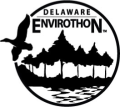Choose a site. Using a soils map, locate soil types on the site. Color code types by drainage classifications. Discuss soil types in relationship to land use. Determine if the land was modified to accommodate present use or how it might have to be modified for proposed uses. Discuss pros and cons of these modifications.
Dig a soil pit or go to an area where there is evacuation going on (get permission if needed). Look at the soil profile and measure the soil horizons. Determine soil properties and drainage classification. Check your results with a soil survey. What limitations may be apparent in using a soil survey in this small area?
Identify an area in your town that is eroding. Determine what is causing the erosion and develop a proposal to stop the erosion.
Prime farmland is a classification used by the U.S. Department of Agriculture to identify soils which are excellent for crop production. What are the characteristics of prime farmland soils? Research and identify prime farmland soils in Delaware. Determine where most of the prime farmland soils are located. How is this information being used by the State? By farmers?
Land use decision makers need to take soil types into consideration. Discuss the merits of all soil drainage classes as they apply to: 1) on-site septic systems; 2) establishment of a tree farm; 3) underground storage tanks; 4) vegetable production; and 5) construction of new recreation fields.
Sample Questions
1. The quality of soil that allows air or water to move through it is called:
a) percolation b) permeability c) infiltration d) structure
2. Which of the following surface features was not deposited by water?
a) sand dune b) silt cap c) tidal marsh d) mountains
3. Which horizon has the highest percentage of organic matter?
a) A horizon b) B horizon c) C horizon d) O horizon
4. Gray colors in lower soil horizons are an indication of:
a) presence of oxygen
b) absence of oxygen
c) absence of structure
d) presence of clay
5. Mulches, temporary seeding, and silt fence are techniques used to:
a) control flooding
b) control weeds in landscaping
c) prevent erosion and control sediment
d) prevent groundwater contamination on construction sites
6. Answer the following question after examining the test pit. What is the depth to the seasonal high water table in this soil?
a) 0 to 10 inches
b) 10 to 20 inches
c) 20 to 30 inches
d) no evidence of high water table
7. Answer the following question from the Delaware Soil Survey Reports. The soil is located at the intersection of Routes 6 and 13 on Sheet 16. Would the developer be able to find a source of sand and gravel within 1,000 feet of the intersection? (Check one)
_____ Yes _____No
